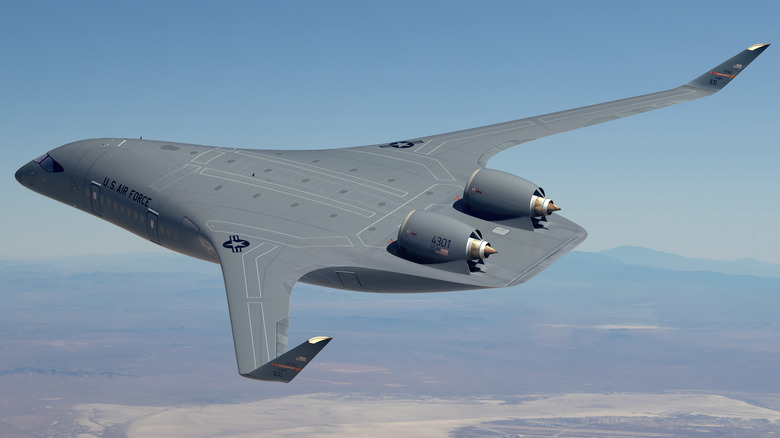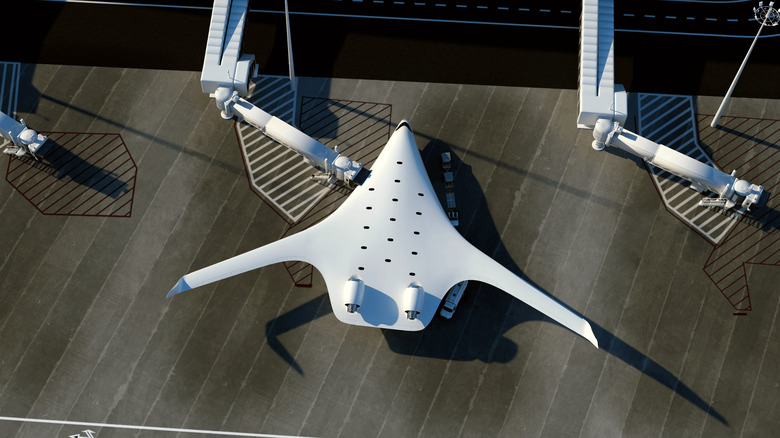The US Air Force Is Getting A New Blended Wing Body Jet: Here's What We Know About It
Yesterday the United States Air Force announced that it is sponsoring JetZero to build a blended wing body (BWB) prototype. JetZero is an aviation startup founded in 2021 to bring BWB aircraft to the middle market. Notably, one of the company's co-founders is Mark Page, an engineer who worked with NASA in the 90s researching the tech and is even credited with inventing the first BWB.
JetZero likely caught the eye of the Air Force when the startup unveiled its 200-seat BWB proof-of-concept aircraft earlier this year. Now, the Department of Defense is investing $235 million over four years to fast-track the development of a BWB craft. The Air Force hopes to conduct flight testing in 2027 at the earliest.
The BWB concept has existed for some time, with aviation companies such as Airbus tinkering with the concept in the past. However, according to the Air Force, new technological advancements have finally made large-scale production of the craft possible. Assistant Secretary of the Air Force for Energy, Installations, and Environment Dr. Ravi Chaudhary called the sponsorship a "game-changing milestone for the Air Force in our efforts to maintain the advantage of airpower effectiveness against any future competitors." But what are the advantages of a BWB aircraft, and who will benefit from it?
It's much more aerodynamic than traditional planes
For many, the BWB design is considered the future of air travel. Without its need for a tail and side surfaces, a BWB craft is more aerodynamic than traditional airplanes as its entire surface creates lift. The Air Force expects BWB aircraft to lower aerodynamic drag by at least 30%. This, in turn, drastically reduces fuel consumption, resulting in 50% less fuel burned without compromising the size or load of the craft.
Air Force notes that several military transport configs could utilize a BWB design. These eligible configs total approximately 60% of the department's annual fuel consumption. So, it's easy to see why the Air Force is eager to get this concept off the ground.
Reducing fuel consumption also means less CO2 emissions reducing an aircraft's carbon footprint. Thus, JetZero calls BWB crafts "the best first step on the path to zero carbon emissions." It will also use sustainable aviation fuel, with the ability to adapt to eco-friendly hydrogen fuel in the future.
There are also some other benefits to this design that everyone can enjoy. For example, the engines being on top of the plane means the noise is directed upwards, making air travel less noisy to those below. It is also said to give more space for passengers on commercial flights. It's unknown how much is hype and how much is reality, so we will have to wait until this project takes off before we can see for ourselves.

